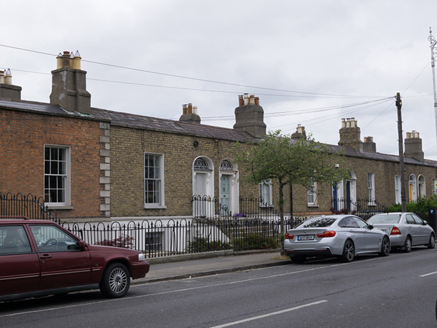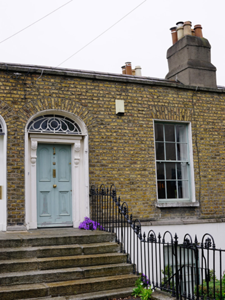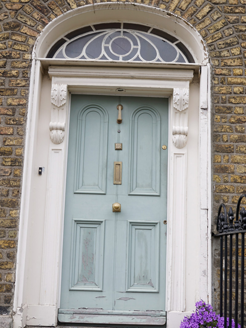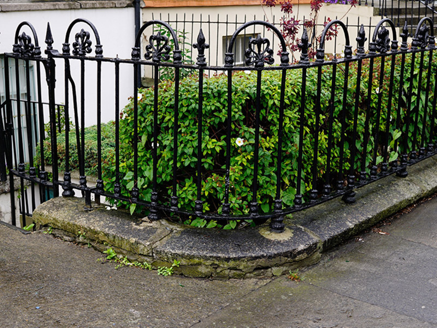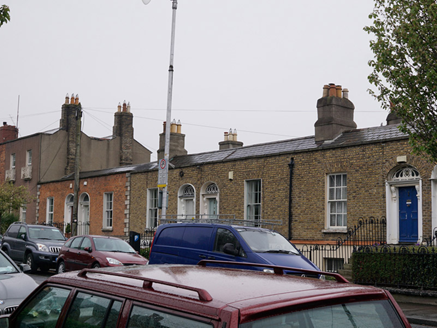Survey Data
Reg No
50110237
Rating
Regional
Categories of Special Interest
Architectural, Artistic
Original Use
House
In Use As
House
Date
1840 - 1860
Coordinates
315386, 232815
Date Recorded
30/04/2017
Date Updated
--/--/--
Description
Terraced two-bay single-storey house over basement, built c. 1850. M-profile pitched slate roof, partially hidden behind brown brick parapet having granite coping, rendered chimneystacks with terracotta pots. Cast-iron rainwater goods. Brown brick, laid in Flemish bond, to walls, with cut granite plinth course over rendered wall to basement. Square-headed window openings having granite sills, raised render reveals, six-over-six pane and three-over-six pane timber sliding sash windows. Elliptical-headed door opening with moulded render surround, panelled pilasters and fluted console brackets with acanthus leaf detail and stepped cornice. Teardrop fanlight and timber panelled door. Square-headed door opening having overlight and timber battened door to basement. Cast-iron bootscrape to platform, granite steps with cast-iron railings, having some fleur-de-lis finials, set on carved granite plinth wall enclosing basement area.
Appraisal
This house retains a strong sense of its original character, with salient features contributing to the historic value of the composition. An elegant teardrop fanlight and well-executed doorcase provide an aesthetically-pleasing focal point on the façade. Heytesbury Street, named after Baron Heytesbury, Viceroy 1844-6, was first laid out in 1846 and was nearing completion by 1861. The streetscape maintains a strong sense of its original character, with many houses, like this example, showing Greek revival details. The architects John Louch & Sons were offering sites for sale along this street 1854-1860, and it is possible that Louch, or one of his five sons, was involved in the design of this house. This is the only house on this side of the street which was still vacant by 1862.
